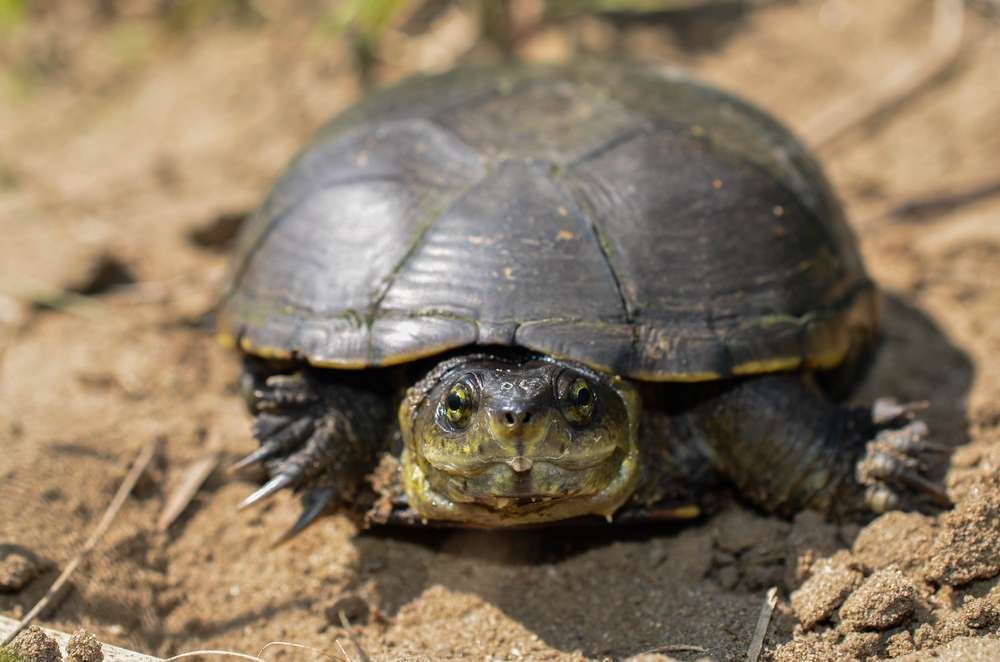Variable Mud Turtle
( Rhodesian mud turtle, Mashona hinged terrapin or variable hinged terrapin )
- Pelusios rhodesianus
- IUCN Status: Least Concern
- Threat: harmless
- Venom/Toxin: none
- Trend: decreasing

- Phylum: Chordata
- Class: Reptilia
- Order: Testudines
- Suborder: Pleurodira
- Family: Pelomedusidae
- Genus: Pelusios
Share:
General Information
The variable mud turtle is a moderate-sized turtle.
Fun Facts!
Turtles and Tortoises are known to be highly intelligent. They can dig under or plan their escape from captivity, they can learn new tricks and remember them for a very long time. Another interesting feature is that they have both an exoskeleton (the shell on the outside) and an endo-skeleton (the bones on the inside).
Description
It is a medium sized turtle. A hinge gives it a more or less complete closure of the anterior part of the shell. having an oval, moderately domed shell. The carapace (top shell) and bridge are black, the plastron (underside shell) may be black, with or without irregular yellow patches or uniform yellow. The head is brown the sides of the head and skin of the neck and limbs are yellowish, but gray-brown on outer faces of the limbs.
- Length: up to 25.5 cm
Ecology and Behaviour
Diet
The variable mud turtle are omnivores and their diet probably consists largely of mollusks and aquatic insects, but they also feed on the stems, leaves, and flowers of aquatic plants.
Reproduction
Conservation
It is categorized by the International Union for Conservation of Nature (IUCN) as a, ” Least Concern “.
Distribution and Habitat
The variable mud turtle can generally be found in or around water sources or areas such as lagoons or swampy areas like those surrounding Lake Bangweulu, luena flats, kafue flats and in the luangwa valley. It is widely distributed in Central, East, and Southern Africa. in the Republic of the Congo, the Democratic Republic of the Congo, Uganda, Rwanda, Burundi, Tanzania, Angola, Zambia, Malawi, Zimbabwe, Botswana, Mozambique, and South Africa.
Interaction with humans
Currently it is mainly threatened by widespread collection from the wild for the illegal international trade in the species. It is also collected by local peoples for food and human population growth in the area is putting pressure on the species. Human-induced fire is also a threat. In most Zambian cultures, turtles and tortoises are revered and respected by people. It is said that one should never kill a turtle or tortoise without reason. If you are to come across one stuck upside down along your path, it is said to be good luck to help it and turn it over to let it goon its way and that doing the opposite or leaving it stuck is very bad luck and karma.
No donation to this project yet.
| M | T | W | T | F | S | S |
|---|---|---|---|---|---|---|
| 1 | 2 | 3 | 4 | 5 | 6 | 7 |
| 8 | 9 | 10 | 11 | 12 | 13 | 14 |
| 15 | 16 | 17 | 18 | 19 | 20 | 21 |
| 22 | 23 | 24 | 25 | 26 | 27 | 28 |
| 29 | 30 | 31 | ||||


